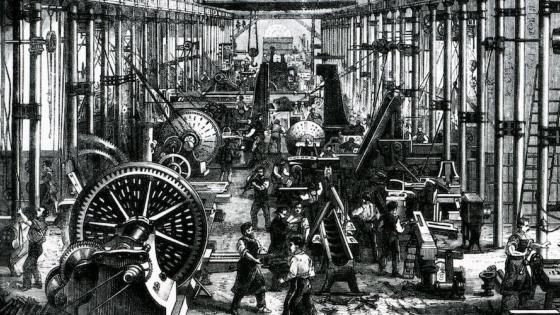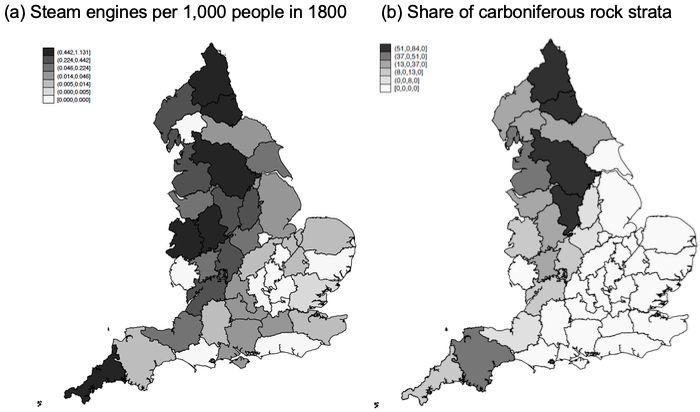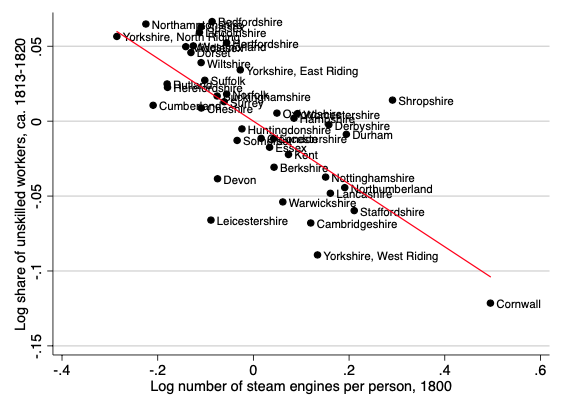Has technical progress historically been skill-saving or skill-demanding? The consensus is that the implementation of new technologies after the 19th century increased the demand for skilled workers. There is less agreement, however, as one moves further back in time (e.g. Katz and Margo 2014). Recent contributions to ‘unified growth theory’ have argued for a positive effect of technical change on human capital formation during the transition to sustained economic growth (Galor 2011). This has recently received empirical support from a study of 19th century France (Frank and Galor 2017). But the conventional wisdom, based on evidence from 19th century US and industrialising England, is that technological change was predominantly ‘de-skilling’ as the factory system began to replace the artisanal workshop (Goldin and Katz 1998). Combined with a long list of chronicles about machine-breaking riots, triggered by workers’ fears that the new factories would render their skills redundant, the English case, at least prima facie, seems to provide support for the hypothesis that the shift from workshop to factory production reduced the demand for skilled workers. But the effect of technical change on human capital formation during the first Industrial Revolution has not been tested formally.
Thanks to early 19th century occupational statistics provided by Shaw-Taylor et al. (2006), we were able for the first time to classify over 2.6 million English male workers according to the skill-content of their work (de Pleijt et al. 2018). The categorisation of occupational titles by skill, which we did by employing a standardised work-classification system (HISCO), allowed us to translate the occupational titles from the Cambridge data into four work categories: unskilled, lower-skilled, medium-skilled, and highly-skilled.
We then exploited county-level variation in the use of steam engines to investigate the effect of technological change on the formation of working skills. In order to establish whether or not any observed effects between technology and human capital were causal, and because steam engines run on coal, we used the fact that the share of carboniferous rock strata in a county was highly correlated with the number of steam engines per person installed by 1800 (Figure 1), but that the concentration of rock strata was independent of the county’s pre-industrial indicators of development and human capital formation.
Figure 1 Steam engines per 1,000 peopleand carboniferous rock strata shares
Our empirical analysis shows that more steam engines per person was associated with lower shares of unskilled workers (Figure 2). If a county with no steam technology had increased its number of engines per person to the level of Yorkshire West Riding, an important early industrial centre with one engine per 2,500 persons, then it would have led to a 13 percentage point decline in the share of unskilled workers. We also establish that more engines per person was positively connected with higher shares of highly-skilled mechanical workers, such as engineers, wrights, and machine makers, representing the ‘density in the upper tail of professional knowledge’ (Meisenzahl van Mokyr 2012). Our analyses show, however, that the use of steam technology was either negatively associated with, or had no significant effect on, primary education, captured by the primary schools per person, school-enrolment rates, and literacy rates.
Figure 2 The shares of unskilled workers and the numbers of steam engines used per person
The ambiguous effect of the Industrial Revolution on the formation of human capital supports the narrative that England’s early industrialisation had a neutral effect on, or even harmed, primary education. But the observed effects also show that early industry stimulated the formation of formal working skills, particularly industry-specific ones. The latter effects align with unified growth theory, according to which technological progress during the Industrial Revolution prompted investment in human capital (Galor 2011). The ambiguous nature of our findings further chimes with theoretical work by O’Rourke et al. (2013), who argue that early industrial technological progress could be simultaneously skill-saving and skill-demanding. Contrary to the traditional workshop-to-factory argument of skilled workers’ downward mobility, based on our findings we conjecture that early industrialisation prompted a farm work-to-factory transition, whereby unskilled agricultural workers experienced upward mobility into skilled work. This conclusion is more in tune with the broader consensus, based on 20th century evidence, that technological change favours skills (Acemoglu 2002).
References
Acemoglu, D (2002), “Technical change, inequality, and the labor market,” Journal of Economic Literature 60: 7–72.
de Pleijt, A, A Nuvolari and J Weisdorf (2018), “Human capital formation during the First Industrial Revolution: Evidence from the use of steam engines,” CEPR, Discussion Paper 12987.
Franck, R and O Galor (2017), “Technology-skill complementarity in the early phase of industrialization,” NBER Working Paper no 23197.
Galor, O (2011), Unified Growth Theory, Princeton: Princeton University Press.
Goldin, C and L F Katz (1998), “The origins of technology–skill complementarity,” Quarterly Journal of Economics 113: 693–732.
Katz, L F and R A Margo (2014), “Technical change and the relative demand for skilled labor: The United States in historical perspective,” in L P Boustan (ed), Human capital in history: The American record, University of Chicago Press: 15–57.
Meisenzahl, R and J Mokyr (2012), “The rate and direction of invention in the British Industrial Revolution: Incentives and institutions,” in J Lerner and S Ster (eds), The Rate and Direction of Incentives and Institutions, NBER: 443–79.
Mitch, D (1999), “The role of education and skill in the British Industrial Revolution,” in J Mokyr (ed), The British Industrial Revolution: An Economic Perspective, 2nd edition, Boulder: Westview Press, 241–79.
O’Rourke, K, A Rahman and M Taylor (2013), “Luddites, the Industrial Revolution, and the demographic transition,” Journal of Economic Growth 18(4): 373–409.
Shaw-Taylor, L, P M Kitson and E A Wrigley (2006), “1813-20 Parish register occupational data for England and Wales”. (these datasets were made possible through two grants from the ESRC: The changing occupational structure of nineteenth century Britain (RES-000-23-1579) and ESRC: Male occupational change and economic growth in England 1750-1851 (RES 000-23-0131)).








